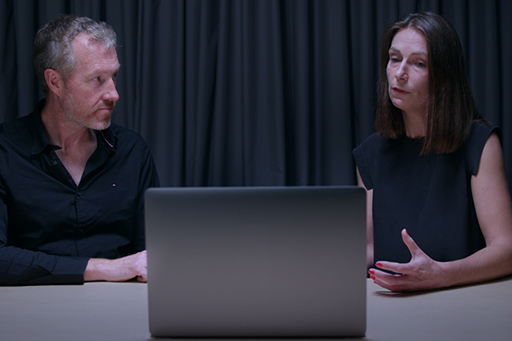3.2 An assessment of Mick Brough as a suspect
Now you’ve had a chance to make your own assessment of Mick as a suspect, read the expert opinion.
Suspect credibility
As discussed, in the interview you will have observed a lot of different accounts of what happened from Mick, and these are hard to reconcile unless Mick is lying at various points. In the account he provided prior to the interview, Mick claimed to be at home watching TV. In the interview while he initially claims not to know who Leonard is, he later claims that he dropped his sister off at Leonard’s property but did not enter the property himself. It is obvious to an observer that Mick is not likely to be telling the truth in some of what he is saying to the police as the accounts are inconsistent.
As well as that, there are inconsistencies with both versions of Mick’s account and the other evidence. There are reasons therefore to doubt the truthfulness of Mick’s account. Note that these judgements about deception are not based on body language or any other form of nonverbal communication (as you have learned that these cues are often unreliable), they are made based on discrepancies in the claims being made.
Rapport
Mick is not an easy suspect to interview. He is dominant, hostile and displays maladaptive behaviour, especially at the start of the interview. He refuses to sit down, swears a lot, shouts and is very difficult to manage.
Despite this, DS Sund does an excellent job. In particular she does not match Mick’s maladaptive hostile behaviour. When Mick says ‘Suit yourself, why am I here?’, which is very hostile, she is calm and explains in a frank and forthright way the reasons for his arrest. She is on the adaptive, rather than the maladaptive, circle. Likewise, she is similarly frank about the relationship Leonard was in with Mick’s sister. She does not shy away from covering that, even though Mick might not approve of the relationship.
DS Sund does not try to catch the suspect out when he reveals that he is lying. For example, when he initially claims not to know Leonard but then later says he dropped Nita off there, she doesn’t allow herself the ‘Aha, so you do know who he is’ moment that it might be tempting to have. Instead, she allows him to give the account. Sund does not get drawn into maladaptive arguments, instead she is predominantly in a positive version of the hostile and slightly submissive space, by being frank and forthright. This is a good place for her to be with this suspect.
Coercive practices
There is no evidence of coercive practice on Sund’s part. She doesn’t lie, her behaviour could not be considered oppressive, and she seeks to neither maximise nor minimise the offence. She doesn’t suggest an account to the suspect, she seeks an account from him.
Use of evidence
In the interview you will notice that Sund disclosed the following initially:
- the time of discovery of Leonard’s body
- the last time that Leonard was seen alive
- the fact that a witness claims to have seen Nita and Mick at around 7.00 pm on Sunday
- the ANPR record of Mick’s car passing by the road at 7.10 pm.
This meant that in the interview Mick was able to be located in the relevant time period and at the relevant location (remember that his initial statement said that he was at home watching TV). However, it also meant that there were elements of the evidence that could be used to either support the suspect’s case if he was innocent, or test the truthfulness of his account.

